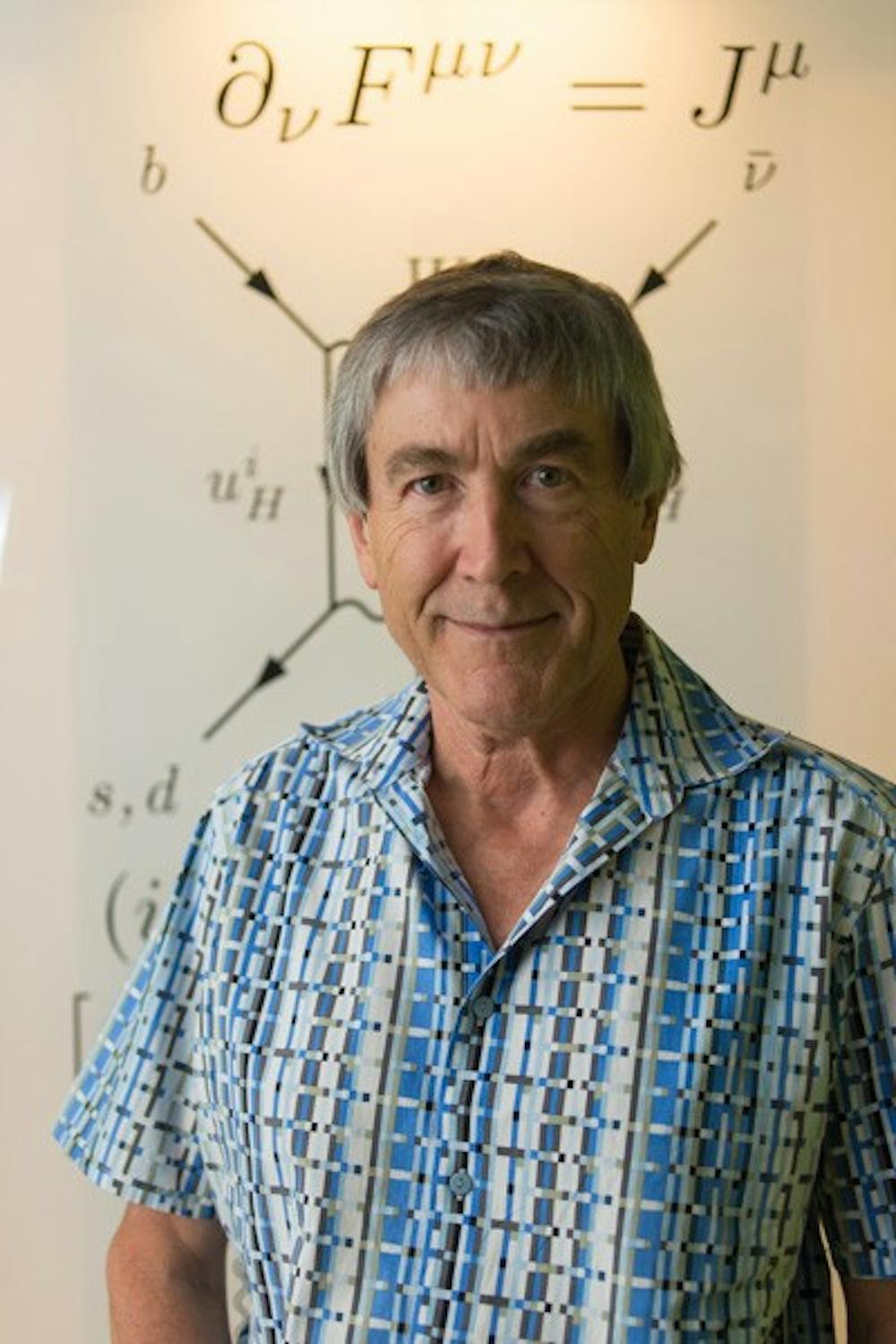 ASU Professor Paul Davies poses near his office at the Goldwater Center for Science and Engineering in Tempe. Davies recently devised a theory for the origins of cancer by combining physical and biomedical science that looks into the evolutionary roots of cancer. (Photo by Andrew Ybanez)
ASU Professor Paul Davies poses near his office at the Goldwater Center for Science and Engineering in Tempe. Davies recently devised a theory for the origins of cancer by combining physical and biomedical science that looks into the evolutionary roots of cancer. (Photo by Andrew Ybanez)
ASU cosmologist Paul Davies recently devised a theory for the origins of cancer by combining physical and biomedical science that looks into the evolutionary roots of cancer.
Davies said his theory, which seeks to trace the roots of cancer, is valuable for the future of cancer research and could help scientists find a cure in the future.
“We’re trying to truly understand cancer,” he said. “If we can understand how it operates, we can extend life expectancy by gaining control of it.”
His theory aims to figure out how cancer operates and says the disease must have evolutionary roots.
Cancer is like a computer that defaults back to safe mode, meaning the disease uses the same core functionality but makes small changes in the process, Davies said.
“I wondered why a cell from the kidney would want to go live somewhere else and why cancer cells gather on a particular organ,” he said. “Cells do it so effortlessly that it seems like a re-enactment of the same old program or process.”
He said the way cancer is triggered has not developed much throughout the years.
“Something unleashes cancer,” Davies said. “The way cancer gets going is by executing a deeply-embedded repertoire of behavior that has been there for a very long time.”
Davies said the project started when he received a call from the National Cancer Institute five years ago asking him to participate in cancer research.
“I told them I didn’t know anything about cancer, but they said it didn’t matter,” he said. “This began a whole new adventure, a very stimulating experience.”
Shortly after, he received a large research grant from the NCI and started the Center for Convergence of Physical Science and Cancer Biology at ASU.
“This is when I truly started to develop my own ideas about the nature of cancer,” Davies said.
Davies said one of the main ideas in his theory was inspired by a documentary on the evolutionary roots of a sponge.
“I figured if the lineage of a sponge goes back 600 million years, cancer could possibly go back that far as well,” he said.
Davies said his way of thinking was vastly different than that of a cancer biologist, which gave him a different perspective.
“When you’re a physical scientist, you always ask the basic questions,” Davies said. “Cancer biologists never ask, ‘Why?’”
However, Davies said he has been receiving much criticism from cancer biologists looking to belittle his theory.
“The criticism is really a mixture of ‘You’re a physical scientist, and you don’t know what you’re talking about,’ and ‘We knew that all along,’” he said.
He defended his theory against the criticism and said it is original in its own way.
“Nothing that we have said has been said before,” Davies said. “We’re trying to connect the dots, because no one has come up with a theory for the deep evolutionary roots of cancer.”
Charles Lineweaver, who was worked with Davies for about a decade, said creating the theory went smoothly.
“As the theory developed it felt very natural,” he said. “All we did was embed everything we were learning.”
He also said definition of “evolution” used by Davies’ team is much different than that of a typical research oncologist.
“When we say evolution, we mean that over hundreds of millions of years,” Lineweaver said. “However, when most research oncologists are talking about evolution, they mean that of cancer cells in the body of a patient over a year or two or at most a few decades.”
ASU physicist Luis Cisneros, who has been working with Davies by studying some of his ideas, said research is still being done to provide more toward and expand on Davies’ theory.
“I have been working with a couple of teams to test the model by looking at the evolutionary pattern of genes and pathways involved in cancer progression,” he said. “I am also involved in the development of a computational model that takes into account the overlap between the evolution of multicellularity and the features of cancer.”
Reach the reporter at Justin.Toscano@asu.edu or follow him on Twitter @justintoscano3.
Like The State Press on Facebook and follow @statepress on Twitter.




